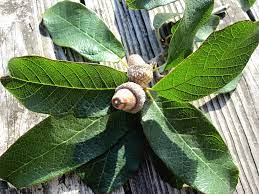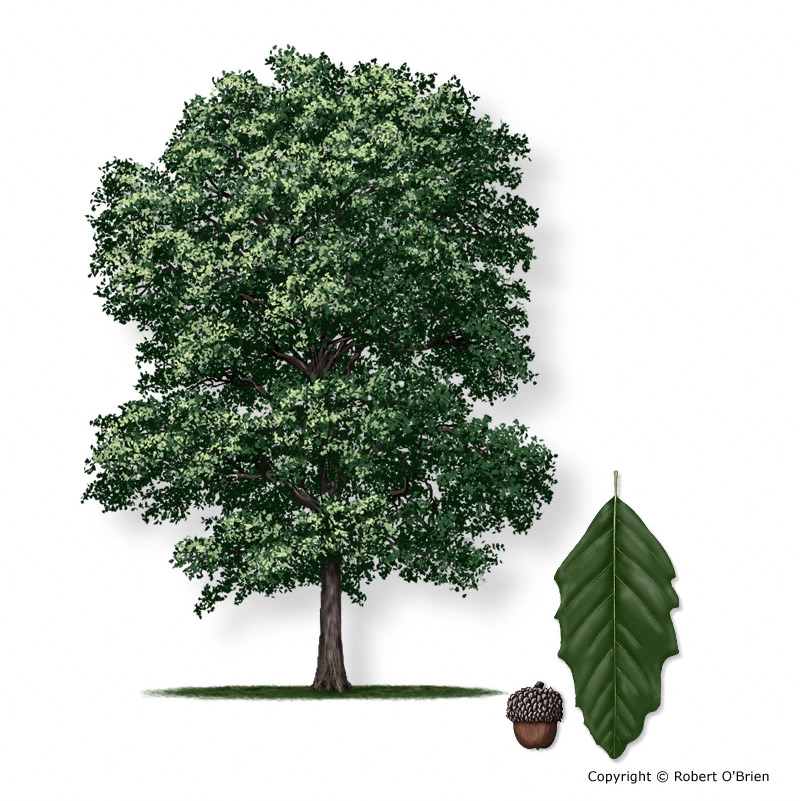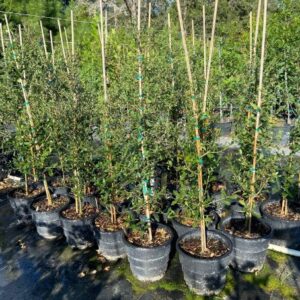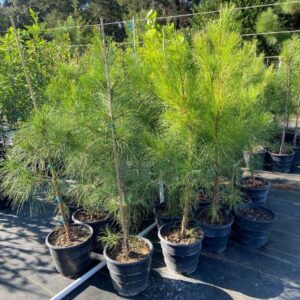Common names: Mexican White Oak, Netleaf White Oak
The Monterrey oak is a native North American species of oak. It is widespread from Central America up into Texas. It grows relatively rapidly (faster than a live oak, slower than a Nutall oak). In south central and southeast Texas, they are practically evergreen. Extremely low temperatures belo 15-degrees for several days will cause leaf loss or make the leaves look shabby, but no harm to the tree.
This variety of oak is drought-tolerant and more resistant to oak wilt and other common diseases and pests.
General Characteristics of Monterrey Oak
- Tree Size: medium-sized tree
- Exposure: full sun
- Fruit Characteristics: male and female flowers in spring on the same tree with the male flowers on catkins up to 4″ long and female flowers less conspicuous that produce acorns up to 1″ long maturing in one year enclosed one-half by the acorn cup.
- Height: 80′
- Width: 50′
- Plant Character: semi-evergreen (evergreen in Houston, San Antonio, and Austin areas)
- Heat Tolerance: very high
- Water Requirements: low
- Soil Requirements: adaptable to a wide range of soil types and to alkaline through slightly acidic soils
- USDA Hardiness Zones: 7-10
 Leaf Shape & Habit
Leaf Shape & Habit
Simple, alternate thick, leathery leaves of highly varying lengths, 2″ to 5″ long. Often leaves have several shallow lobes or teeth towards the tip. The leaves have distinct raised veins on the yellowish underside. New leaves are peach-colored. Leaf characteristics:
- Leaf Complexity: Simple
- Leaf Shape: Ovate
- Leaf Venation: Pinnate
- Leaf Margin: Lightly toothed near tip
- Leaf Color and Sheen: Leathery olive-green








Reviews
There are no reviews yet.